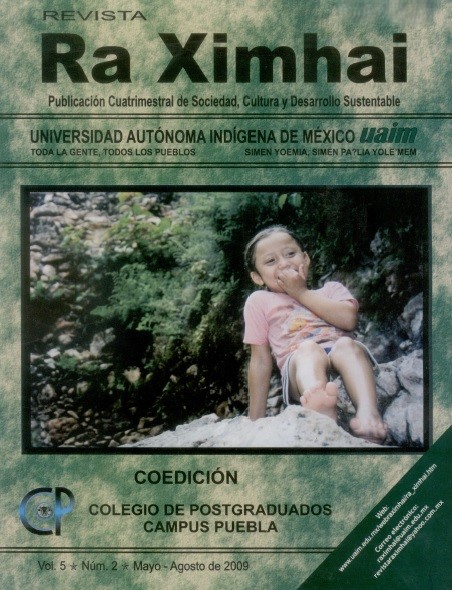Determination of species of birds of prey in the sugar cane (Sacharum officinarum) supply area of the Azucarera de Los Mochis S. A. de C. V. company, susceptible to being used as biological control in integrated pest management
DOI:
https://doi.org/10.35197/rx.05.02.2009.09.aqKeywords:
Raptors, biological controlAbstract
The Sugar Company of Los Mochis has suffered great losses in sugar cane production due to the incidence of various pests, among which the field rat (Sigmodon arizonae) is one of the main ones since it affects the weight and sugar content. In the present work a study is made on the taxonomy of birds of prey, with the objective of locating and determining taxonomy and susceptibility of being used in the biological control of rodents, in the sugar cane supply area of the Sugar Company of Los Mochis S.A. de C.V. in Ahome, Sinaloa. The research was carried out in the months between February and June of 2005, through the establishment of seven transects of 10 km. The method was adapted for the region based on that proposed by numerous researchers (Ambrose, S. 1989., Tillie, S.R; R,E. Boddy,M; Auckland, S,T. 1986). Daily morning and evening walks were conducted at the same times for all transects. Bird sightings were made using binoculars, and then recorded and photographed with a digital video camera. Once the observation and recording were made, taxonomic determination was made by comparing them with photographs from various bibliographies (National Geographic (2001), Peterson, T. Roger and Edward, Chalif. (1994)), emphasizing the most outstanding characteristics, keys that served to determine the species to which the observed and recorded birds belonged. The birds not photographed were taxonomically determined based on observations with binoculars and comparisons with a field guide, taking into account the most distinctive characteristics of each species, habitat, and distribution. A total of ten species were detected, which are distributed in 5 families. Seven of the ten species determined are susceptible to being used in biological control of rodents, since they include these organisms in their diet, 3 are scavengers and opportunists. The plant species most used as perches by them were determined.
Downloads
References
Ambrose, S.1989. The Australian bird count-Have we got your numbers? Raou Newsletter. Publicado por The Royal Australasian Ornithologists Union, Moonee Ponds, Viv.3039, Australia, 80:1-2.
–––––American Ornithologists' Union. 1998. Check- list of North American birds: 7th edition.
The American Ornithologists' Union. Allen Press, Lawrence, Kansas. 829 páginas.( ISBN 1-891276-00-X ) ( en inglés
Araya Mödinger, Braulio y Guillermo Millie Holman. 1998. Guía de Campo de las Aves de Chile. Editorial Universitaria. Santiago de Chile. 406 páginas.
Bort Cubero José. S/A. Aves rapaces diurnas de la provincia de Castellón: Estimación del número de parejas nidificantes. En línea. Disponible en
http://www.internatura.org/estudios/trab021g.ht ml. [30 de enero de 2009]
Cucul, Magaña, Fabio German. 2002. Atlas de la biodiversidad de Sinaloa. Editorial 11 ríos. Culiacán Sinaloa Mex. P.C. 375-379.
De Ita, Roberto, et al. 1992. Distribución y descripción de roedores de importancia agrícola. Secretaría de Agricultura y Recursos Hidráulicos. México.
García, C. D. sin/año. Las aves y su hábitat. En Línea. Disponible en http://personales.larural.es/diegogcu/habitat.ht
m. [30 de enero de 2009].
––––––En Línea. Disponible en http://www.ccbirding.com/ thw/id/species.htm
––––––En Línea. Disponible en http://www.internatura.org/estudios/listas/listas.h tml
––––––1987. En Línea. Disponible en http://www.internatura.org/educa/charlrap.html
––––––En Línea. Disponible en http://www.e- local.gob.mx/work/templates/enciclo/sinaloa/mp ios/25001a.htm
Jiménez Mariano. 2004. Las Aves Rapaces Diurnas. En Línea. Disponible en http://www.ine.gob.mx/ueajei/publicaciones/libr os/50/avespresa.html?id_pub=50
Grosse, P. P. 1982. Manual de zoología 2 vertebrados. Editorial Torai-Masson, Barcelona, España, 165 pp.
Muñoz-Pedreros A. 2004. Control biológico con aves rapaces. En: A Muñoz-Pedreros, J Rau & J Yáñez (eds) Aves Rapaces de Chile. CEA Ediciones. 386 pp.
––––––Nathional Geographic. 2001. Birds of North America. Nathional Geographic society, 480 pp.
Orozco, Gerardo, J. A. 1997. Actividades realizadas por el patronato de sanidad vegetal durante la campaña contra la rata de campo. Memoria de Residencia Profesional. Instituto Tecnológico de los Mochis. México.
Peterson, T. Roger y Edward, Chalif. 1994. Aves de México Guía de campo.1ra edición, editorial Diana, Septiembre de 1989, México D.F.
Downloads
Published
How to Cite
Issue
Section
License
Copyright (c) 2009 Alma Lorena Quintero Romanillo, Roberto C. Barreras Fitch, José Antonio Orozco Gerardo , Gerardo Rangel Cota

This work is licensed under a Creative Commons Attribution-NonCommercial 4.0 International License.
Usted es libre de:
- Compartir — copiar y redistribuir el material en cualquier medio o formato
- Adaptar — remezclar, transformar y construir a partir del material
- La licenciante no puede revocar estas libertades en tanto usted siga los términos de la licencia
Bajo los siguientes términos:
- Atribución — Usted debe dar crédito de manera adecuada , brindar un enlace a la licencia, e indicar si se han realizado cambios . Puede hacerlo en cualquier forma razonable, pero no de forma tal que sugiera que usted o su uso tienen el apoyo de la licenciante.
- NoComercial — Usted no puede hacer uso del material con propósitos comerciales .
- No hay restricciones adicionales — No puede aplicar términos legales ni medidas tecnológicas que restrinjan legalmente a otras a hacer cualquier uso permitido por la licencia.








